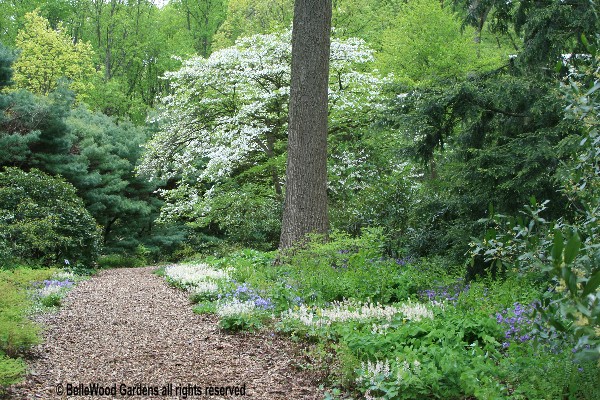
Wednesday, 28 April 2010
A Visit to Mt. Cuba
This afternoon the Tohickon Garden Club is off to visit Mt. Cuba Center, located in in Hockessin, Delaware. The car I was a passenger in went somewhat astray. At length we asked a man driving a dump truck filled with mulch (good choice, right) where was Mt. Cuba. He knew where it was, gave good directions: pass a dam, cross the railroad tracks, and so on. We found ourselves on Mt. Cuba Road and happily drove on. After all, where would Mt. Cuba Center be except on Mt. Cuba Road. Exception is the operative term. The woman we asked said lots of people make the same mistake. Double back, turn here, go there - and yes, we arrived where we wanted to go. The four of us made a pact to say nothing to people in the other three cars. Who, it turned out, had taken a different scenic route and arrived shortly after we did. Whereupon all notion of secrecy was discarded and we explained that yes, we took a scenic route too.
It was decided not to watch the brief video about Mt. Cuba and head outdoors to tour the grounds, again divvied up into two groups.
The back story to Mt. Cuba Center for the Study of Piedmont Flora (to give its full title) is a fascinating one. Mr. and Mrs. Lamont du Pont Copeland began acquiring land near Wilmington, Delaware in 1935. Construction of their Colonial Revival house was completed in 1937. When the original property was purchased the rolling landscape that today is forested was an empty site, an eroded cornfield abandoned in the late 1920s. Bald, you might say. Plantings of tulip poplars, Liriodendron tulipifera, and other canopy trees transformed portions of the 650 acre site from full sun to dappled shade. Mount Cuba is renown for its naturalistic plantings of native wild flowers, ferns, shrubs, and trees begun in the early 1950s.Today the Center, set amid the rolling hills of northern Delaware, is a non-profit organization dedicated to the study, conservation, and appreciation of plants native to the Appalachian Piedmont Region through its garden display, education programs, and research projects.

A woodland path with soft edges, and a dogwood tree in full flower as it turns a corner.
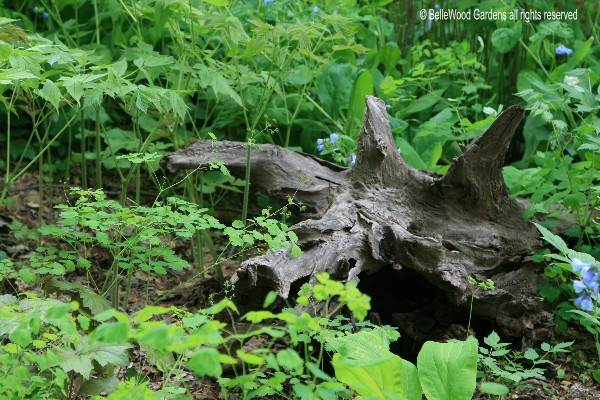
This is a natural looking, not a manicured garden.
A gnarly stump amidst Actaea and Virginia bluebells.

There is a very informative guide by Jeanne Frett, research horticulturist at Mt. Cuba Center. Published in 2007, "Trilliums at Mt. Cuba Center" may be modest in size but it includes ample information on cultivation, propagation, siting, and companion plants for trilliums in the garden. The numerous colonies of diverse species, such as Trillium simile, sweet white trillium, fascinated our group.

One of the more unusual species is the distinctive Trillium stamineum with twisted petals
of a deep blackish purple, color so rich it appears to be seeping out to stain the sepals.
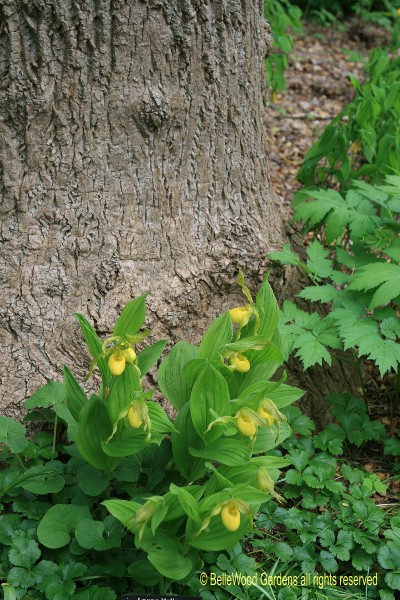
Equally impressive are the groups of large yellow lady slipper orchids,
Cypripedium parviflorum var. pubescens, obviously happily at home.
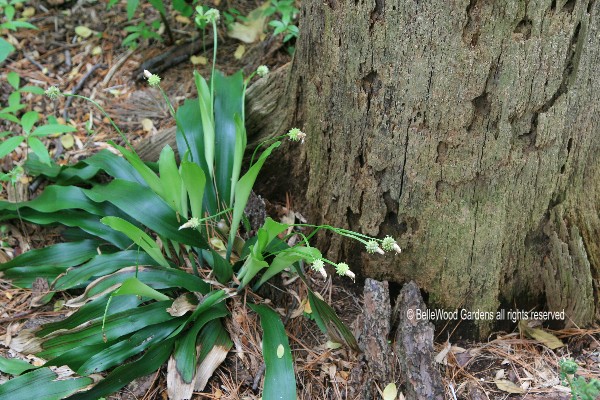
I was quite taken with this broad leaved sedge, Cymophyllus fraseri for
its broad evergreen leaves and dainty white mophead when in bloom.
This sedge is endangered or threatened throughout its range.

Dwarf larkspur, Delphinium tricorne grows from tuberous roots. In the wild it is
found in or along the edges of woods. Pretty as it is, remember it is decidedly ephemeral.
After its spring appearance, flowering, and ample seed set it will then go dormant.
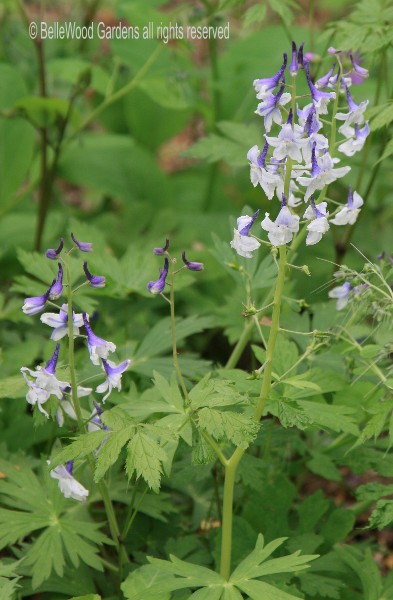
Most of the dwarf larkspur are the typical deep bluish purple. A few plants were white, crowned with a purple spur. I remember a population of purple lupines in the Cascade Mountains out West, with the occasional white flowered form. Bees, I was told, prefer the deeper colored flowers but the recessive genes are in the population so the occasional pale flowers continue to appear. I wonder if it is the same situation here. Whatever. Right now they are beautifully in bloom.